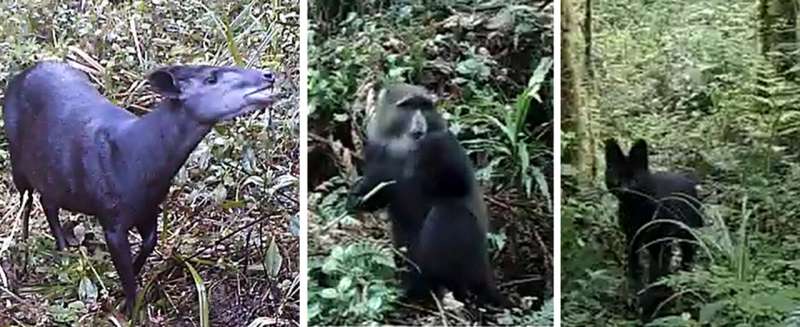Rare antelopes and black cats

Tanzania is home to an elusive antelope species that cannot be found anywhere else in the world. According to the Red List, it can be classified as endangered. The first photograph of one of these antelopes was taken by researchers as recently as the year 2003. So far, the distribution of this species on Mt. Kilimanjaro has not been documented. Its scientific name: Abbott's duiker (Cephalophus spadix).
However, now there are numerous videos showing this antelope. The film sequences were taken by a research group of Julius-Maximilians-Universität (JMU) Würzburg in Bavaria, Germany. The group has been doing research on biodiversity at Kilimanjaro for years. Current research has focused, among other things, on the question of how the biodiversity of larger mammals is influenced by climate change and human activities.
"We recorded the Abbott's Duiker with our video traps at eleven locations at altitudes between 1920 and 3849 meters for a total of 105 times," says doctoral student Friederike Gebert from the JMU Biocenter. "There's even a video of a mating attempt," says the scientist. And that's not the only special feature that has now been captured on film.
Tens of thousands of video sequences evaluated
The team led by JMU Professor Ingolf Steffan-Dewenter and Dr. Marcell Peters installed a total of five camera traps each on 66 study plots at Kilimanjaro—from the savannah in the lowlands to the forest regions at medium altitudes to the bush landscape at altitudes of up to 4550 metres. The cameras remained on site for two weeks, after which they were collected and evaluated.
Friederike Gebert had 80,000 film snippets to go through, of which 1,600 were actually showing mammals. Among them were a total of 33 wild mammal species—in addition to the Abbott's duiker, species like bush pig and porcupine, lesser kudu and yellow baboon were documented. Serval cats were also recorded. These yellow-black patterned predators are about the size of lynxes, but more daintily built. The videos also show a very special kind of serval: an animal whose coat is completely black.
Protected areas are important for biodiversity
The results of the JMU research group will be published in the Journal of Animal Ecology. "All in all, we were able to show that the species richness of large mammals is greatest at mid-elevations of the mountain, i.e. in the forest regions," says Friederike Gebert. The more plant biomass and potential prey there are, the greater the biodiversity.
"In the case of large mammals, biodiversity is particularly high in nature reserves, while it falls by 53 percent in unprotected areas—even though many of the unprotected areas still have natural vegetation," says Professor Steffan-Dewenter. "Our study thus underscores the importance of protected areas for maintaining species diversity of large mammals in tropical mountain regions. To preserve the existing protected areas at Kilimanjaro and to designate further ones is a very desirable goal from the scientific point of view.
More information: Friederike Gebert et al, Primary productivity and habitat protection predict elevational species richness and community biomass of large mammals on Mt. Kilimanjaro, Journal of Animal Ecology (2019). DOI: 10.1111/1365-2656.13074
Journal information: Journal of Animal Ecology
Provided by University of Würzburg




















